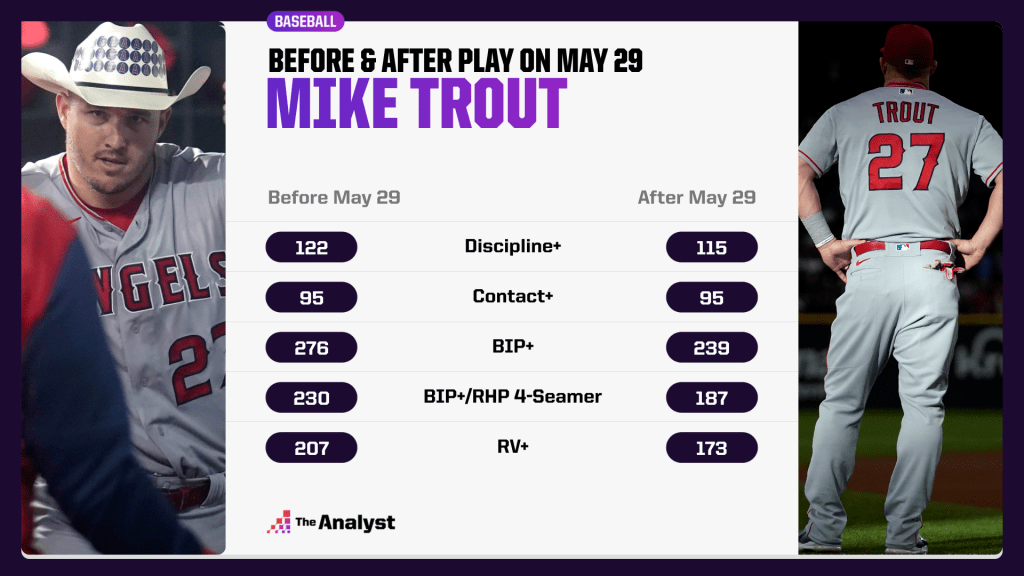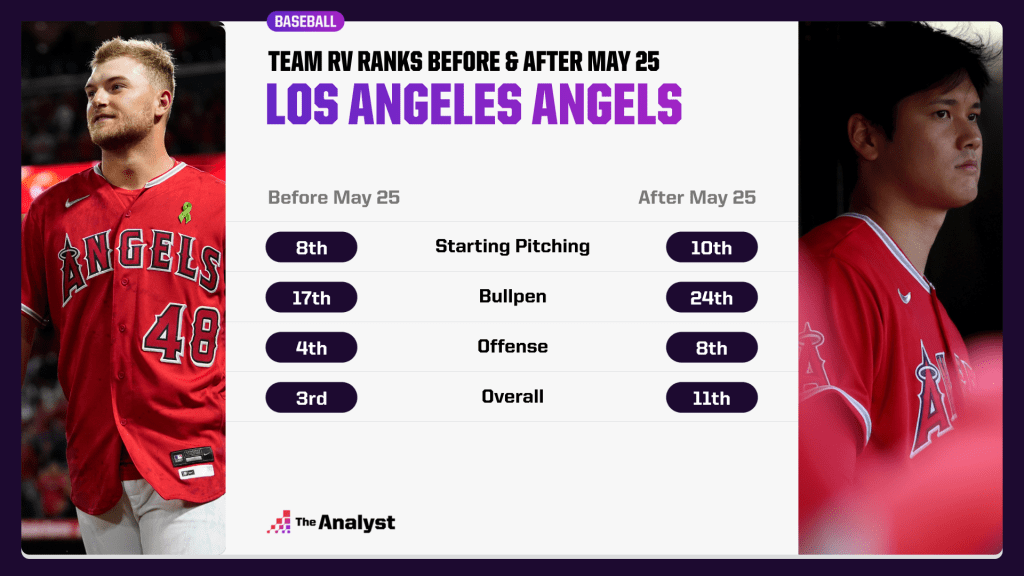Two weeks ago, the Los Angeles Angels were 27-17 and in possession of a postseason spot. Then everything fell apart, and they’re 27-31 heading into the finale of a four-game set against the Boston Red Sox.
They are, as things stand, out of the playoff picture and have a lot of work to do to put themselves on the map again.
Amid an ugly franchise-worst 14-game losing streak and some awkward, tense exchanges with the media, the Angels decided early this week that it was time to interrupt Joe Maddon’s tenure as the manager, which ended with a disappointing 157-172 record over two-plus seasons.
No team has ever lost more this many in a row and made the playoffs that same season (The 2017 Los Angeles Dodgers, 1982 Atlanta Braves and 1951 New York Giants dropped 11 straight and still reached the postseason).
It would be unfair to point out a single player, coach, or the manager as the primary culprit because such a slide requires some lousy all-around play; but the Angels’ losing streak did coincide with a horrid slump by superstar outfielder Mike Trout.
Through May 28, Trout was hitting .320/.422/.673 with 13 home runs, 28 RBIs and a 1.095 OPS. He was one of the most productive batters in baseball. But from May 29 to June 5, he had a rough 0-for-26 stretch that saw him work only two walks against nine strikeouts. And his numbers fell to .274/.378/.575 with a .953 OPS, and the Angels lost all seven games.
He finally broke through with a hit on Monday, and he had a home run and a double on Tuesday before departing with tightness in his left groin. It doesn’t sound like an overly concerning injury, but it is extremely untimely – just when he started to regain his rhythm, he gets hurt.
It’s shocking to see a player of Trout’s caliber go through such an dreadful stretch, but it happens sometimes. In 2004, for example, New York Yankees’ legend Derek Jeter, widely regarded as one of the best hitters of his generation, had a 0-for-32 skid. He finished that season at .292, and after the drought, he would produce 1,905 more hits.
Baseball is full of surprises and weird, unexpected situations.

Are there any red flags that invites us to say that Trout is declining? We already know that he isn’t really running anymore, as the complete absence of stolen bases and his minus-0.2 baserunning WAR indicate, but is he really a worse hitter?
So far in 2022, he does seem to be swinging and missing more than usual. His percentage of missed swings is currently at a career-high 28.5 after it had jumped to 27.5 in the small sample of last year following four straight years in the high teens.
His RC/27 (runs created per 27 outs) is also a career-low 7.71, even after Tuesday’s game in which he doubled and homered. The 0-for-26 slump really affected his stat line.
However, a better way to really evaluate his offensive performance this year may be using raw value or RV+. Whereas most of the mainstream offensive stats assess the outcome of an at-bat, RV+ weighs all pitches a batter sees and judges everything he does with them.
Through May 28, Trout was leading all qualified MLB hitters in RV+ at a rock-solid 207 (100 is considered league average). But heading into Thursday’s action, Aaron Judge and Yordan Álvarez had leapfrogged him in the RV+ leaderboards: the Yankees’ slugger is at 198 while the Astros’ designated hitter is at 194.
What about Trout? He is currently at 176, so it’s pretty clear the slump affected his offensive output.
However, a 0-for-26 stretch is not enough to declare that Trout, an elite hitter still in his prime at 30 years old, is declining as an offensive player. In fact, his current 176 RV+ is just above the mark he finished with in his abbreviated 2021 campaign (only Juan Soto, Ronald Acuna Jr., Bryce Harper, and Vladimir Guerrero were above him).
Can you guess Trout’s 2020 RV+? If you had 173, you were correct! Only Soto, Freddie Freeman, Harper, and Corey Seager beat that mark. So if you were worried about Trout, don’t be: The season is long, and every hitter is prone to rough stretches like this one.
In the end, even after one of the ugliest slumps of his career, Trout is performing at about the same level he has in the last couple of years.
His 2022 contact+, the rate at which he makes contact, of 95 is slightly worse than his 98 mark in 2021 and the 104 he had in 2020, so if there is a specific area to pay attention to, it’s that one. But he still has boasts an excellent discipline+ (the rate at which he discerns quality pitches from bad ones using factors such as pitch velocity, movement, location, and count) of 115 and an elite BIP+ of 243. For reference, BIP+ assesses how much damage a hitter inflicts after contact, and that’s where Trout really shines.
But if you need to worry, worry about the Angels. Six teams will make the playoffs in each league, yes, but before Wednesday’s games, Los Angeles had the ninth-best record in the American League. Not only did the Red Sox surpassed them in the standings during their 13-game losing streak, but the Chicago White Sox and Cleveland Guardians did, too.
Entering play on May 25, the Angels had the third-best overall raw value (team rankings are calculated by using a model that combines each player’s 2022 raw value data). They were playing like a playoff-caliber team all around, too: their starters were eighth in RV-, and they were fourth in offense. The bullpen was the weak unit, checking in at 17th.

But the scenario is different now. Heading into play on Thursday, they’re eighth in batting, 10th in starting pitching, 24th in bullpen and 11th overall. They have fallen a few spots in batting and, particularly, in their bullpen performance.
The Angels have some really talented hitters besides Trout. They have the obvious advantage of rostering fellow game-changing talent Shohei Ohtani and other excellent offensive players like Taylor Ward, Anthony Rendon (who is nearing a return from injury), Jared Walsh and Max Stassi. But their pitching, particularly their bullpen, raises many more questions.
They still aren’t doomed, but if the Angels want to make the postseason for the first time since 2014, they will need to play a lot better.
A lot.
Graphic design by Briggs Clinard.
Enjoy this? Subscribe to our mailing list to receive exclusive weekly content.
